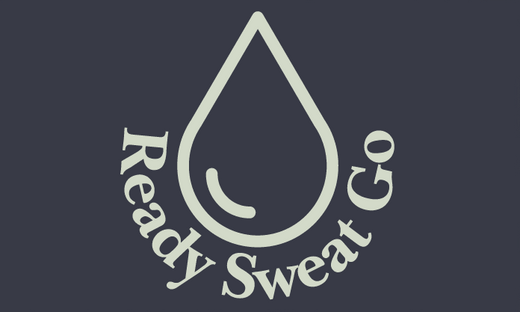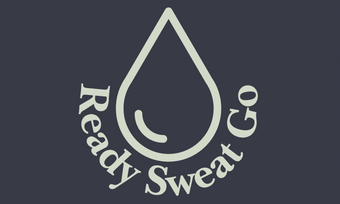Yoga for Injury Prevention and Recovery
Prevention is better than the cure, and if you need this put into context, would you prefer to bounce back from an injury or avoid it in the first place? Exactly.
It’s easy to suggest preventing an injury should be a key focus for athletes and ultra-runners, but it is also easy to overlook it. If you’re driven to beat a Personal Best, your mind can wander from the basics.
However, if you’re carrying an injury or niggle, you’ll struggle to be at your best. This is why you need to think about injury prevention, and yoga is a smart way to reduce the risks you face.
Benefits of Yoga for Injury Prevention
Yoga is good for the mind and body, and here are some of the ways that adding yoga to your training routine can help you avoid injuries:
Improved flexibility and range of motion
Yoga poses (asanas) gently stretch and lengthen muscles, tendons, and ligaments. When your body moves more freely, you reduce the likelihood of tears and strains when working out with high intensity. With yoga, you can:
- Achieve a greater range of motion in your joints
- Reduce muscle tightness and imbalances
- Decrease the risk of overuse injuries
Hopefully, you are aware of the benefits of warming up and stretching your muscles before a race or physical exertion. Yoga is a form of this, so incorporating it into your regular routine should reduce injuries, like hamstring injuries.
Enhanced body awareness and balance
Yoga helps with proprioception, which is a very big word, and it’s all about your body’s ability to sense its position in space. Improving this feature helps you:
- Maintain better form during your runs or workouts
- React quickly to changes in terrain or unexpected obstacles
- Reduce the risk of falls or missteps that could lead to injury
If you’re running, you need to focus on what’s ahead, but you need to be aware of everything around you. This might be other runners or it could be natural hazards and obstacles. If you run off-road or take part in ultra-races, you must be aware of your surroundings. In this regard, yoga helps you respond and react to your surroundings, reducing your chances of injury.
Strengthened muscles and joints
In addition to boosting flexibility, yoga can develop strength in your core. When your legs and upper Supports your joints during high-impact activities
- It improves overall stability and reduces the risk of injury
- It helps correct muscle imbalances that can lead to overuse injuries
A lot of injuries occur because one part of your body is overcompensating for something not being right in another part of your body. The initial problem might be in your ankle or foot, but over time, it might be your knee or lower back that bears the brunt of it, causing you to break down.
This is where yoga is crucial, allowing you to recognise potential pain points, and to rebalance your body to reduce additional stress on parts of your body.
Better posture and alignment
With yoga encouraging proper alignment, you’ll benefit from improved posture. This results in:
- Reduce unnecessary stress on your spine and joints
- Promote efficient movement patterns
- Minimise the risk of repetitive stress injuries
Proper posture and alignment is the sort of thing you don’t think about unless you have a problem and it is cited as a solution to your woes. Then, posture becomes a fundamental aspect of how your health, and effectiveness.
When you’re pushing yourself hard close to your limit, small improvements can make all the difference, which is why it makes sense to ensure you do the basics right. Posture is one of the key basics, and yoga can assist you do the simple things right.
Stress reduction and mental focus
A lot of people associate yoga with mindfulness and breathing, and this helps your mental wellbeing. When you’re mentally prepared, you enjoy benefits like:
- Reduces overall stress levels, which can contribute to physical tension and injury
- It improves focus and concentration, allowing you to maintain proper form even when fatigued
- Enhances your ability to listen to your body and recognise early signs of potential injury

Yoga Practices Beneficial for Athletes
Injuries don’t always occur because you push your body to the limit or you run into something! Sometimes, injuries happen because you are distracted, you are tired or you make bad decisions. These are all preventable, and as yoga is known to reduce stress levels while boosting focus and concentration, it could be the thing that ensures your mind doesn’t wander at the most inopportune time.
Yoga Practices Beneficial for Athletes
We’ll always advise you to speak with a qualified professional when it comes to yoga routines. However, our research and speaking with experts suggests the following yoga poses are of benefit to athletes:
Sun Salutations: This is a good warm-up pose which will boost flexibility and circulation. It also has benefits for cardiovascular endurance.
Warrior Poses: If you are keen to strengthen your legs and core, while improving stability and mental focus, warrior poses are recommended.
Downward Facing Dog: The downward facing dog is a well-known yoga pose, and it stretches a number of areas including your shoulders, calves and hamstrings. It is also said to strengthen your aims and legs.
Pigeon Pose: If you have an issue with tight hips, something many runners and cyclists have to contend with, the pigeon pose should help.
Adding the right yoga pose to your warm-up routine will not only leave you feeling prepared for training or racing, it will hopefully reduce the likelihood of injuries.

Conclusion
At Ready Sweat Go, we think yoga is helpful for physical activities and sporting endeavours. We also think it’s great for improving your mental outlook and approach. However, for some people, yoga’s ability to reduce injuries is the most crucial reason to practice yoga, and we heartily recommend it to all manner of people.
Resources:
Healing or preventing hamstring injuries: https://yogainternational.com/article/view/healing-or-preventing-hamstring-injuries/
Address muscular imbalance with yoga: https://us.humankinetics.com/blogs/excerpt/address-muscular-imbalances-with-yoga
Yoga for reducing perceived stress and back pain at work: https://academic.oup.com/occmed/article/62/8/606/1441276




